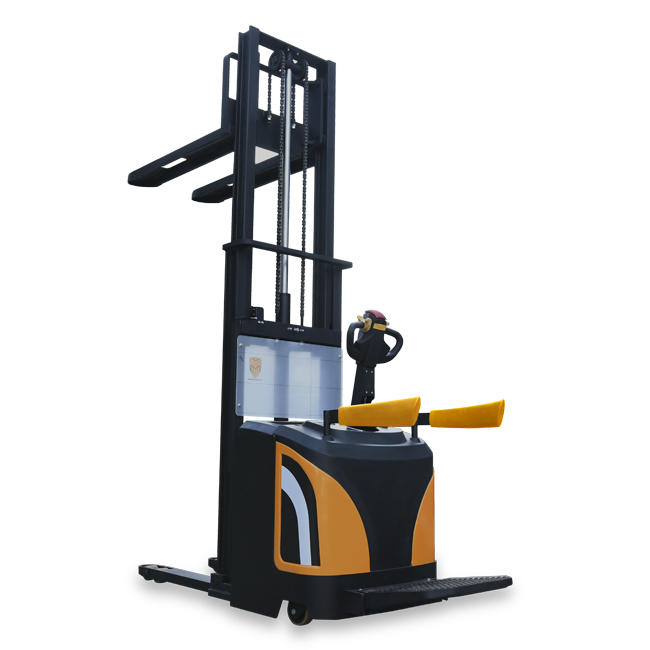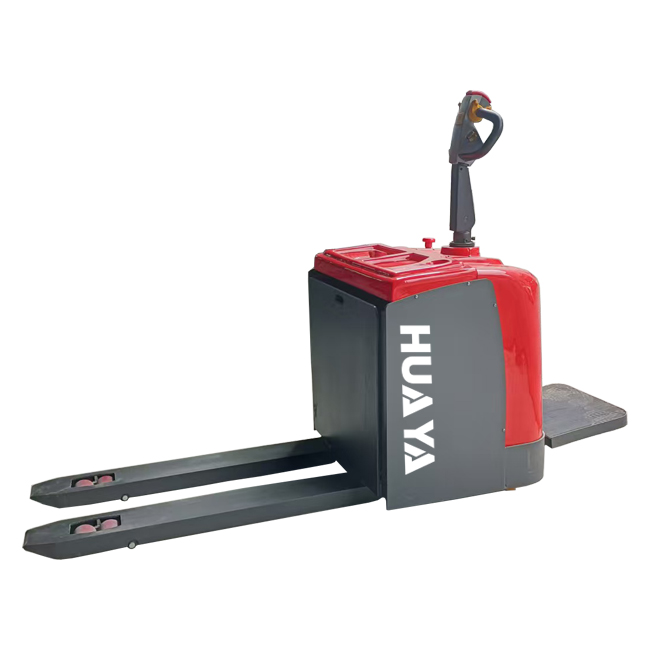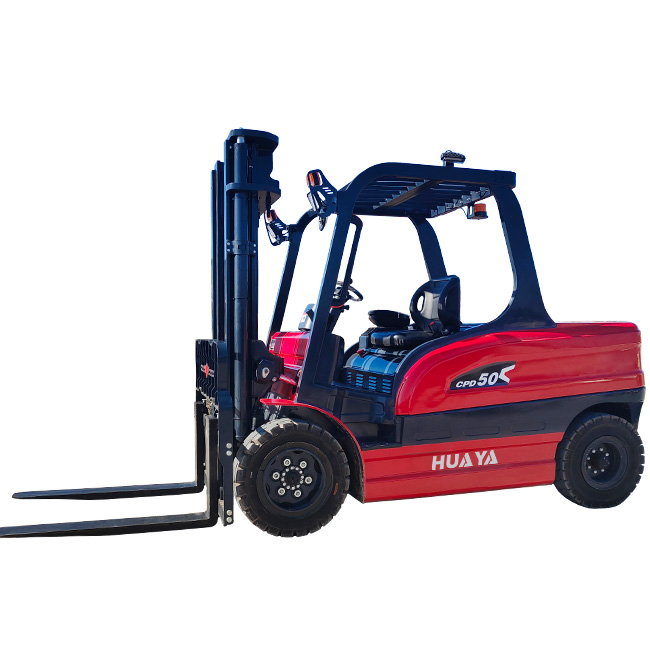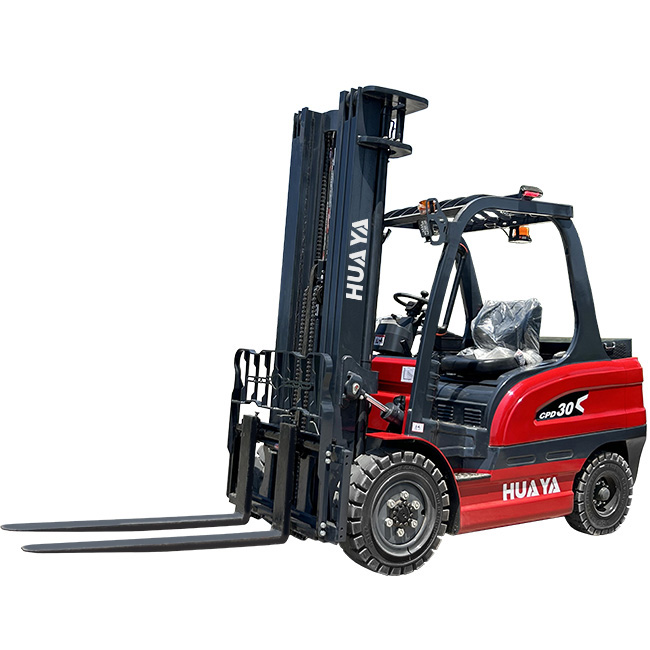How long do electric pallet jack batteries last?
05 Sep 2025
Electric pallet jacks have revolutionized warehouse operations, making material handling smoother, faster, and more efficient. But like any battery-powered device, the lifespan of their batteries is a critical factor in keeping operations running without hiccups. So, how long can you expect your electric pallet jack battery to last, and how can you make it last longer? Let’s dive in.
Understanding Electric Pallet Jack Batteries
Types of Batteries
Electric pallet jacks usually come with two main types of batteries: lead-acid and lithium-ion. Lead-acid batteries have been around for decades and are reliable, but they are heavy and require more maintenance. Lithium-ion batteries, on the other hand, are lighter, charge faster, and offer longer lifespans but come at a higher price.
How They Work
At their core, pallet jack batteries store energy to power the electric motor, which lifts and moves heavy loads. Every lift, push, or turn consumes battery power, which is why understanding usage patterns is key to estimating lifespan.
Average Lifespan of Electric Pallet Jack Batteries
Lead-Acid Batteries
Lead-acid batteries generally last 1,500 to 2,000 charge cycles. Depending on usage, this translates to about 3–5 years in a typical warehouse environment. They require careful watering and maintenance to reach their full potential.
Lithium-Ion Batteries
Lithium-ion batteries offer 2,000–3,000 charge cycles and often last 5–8 years. They are less sensitive to deep discharges and don’t need regular maintenance like lead-acid batteries, which makes them ideal for busy operations.
Factors Affecting Battery Life
Usage Frequency
How often you use your pallet jack plays a huge role. Heavy daily use naturally shortens lifespan compared to occasional use.
Charging Habits
Proper charging practices can extend battery life. Frequent shallow charges and avoiding overcharging are critical. Lithium-ion batteries tolerate partial charges better than lead-acid ones.
Operating Environment
High temperatures, humidity, and dusty conditions can accelerate battery degradation. Keeping your warehouse climate-controlled helps protect your investment.
Signs Your Battery is Dying
Decreased Runtime
If your pallet jack isn’t lasting a full shift or drops power unexpectedly, it’s likely time for a checkup.
Slow Charging
A healthy battery charges at a consistent rate. Extended charging times can indicate a failing battery.
Physical Damage
Swelling, leaking, or corrosion are clear signs that the battery has seen better days.
Charging Practices for Longevity
Proper Charging Cycles
Always follow the manufacturer’s recommended charging cycles. Lead-acid batteries, for instance, benefit from a full charge-discharge cycle, whereas lithium-ion batteries can handle partial charges efficiently.
Avoiding Overcharging
Overcharging can generate heat and reduce battery life, so smart chargers with automatic cut-off are essential.
Maintenance Tips to Extend Battery Life
Regular Inspections
Check for corrosion, cracks, or loose connections. A simple monthly inspection can prevent major failures.
Cleaning and Care
Keep terminals clean and ensure the battery compartment is free from dust and debris.
Watering Lead-Acid Batteries
If you’re using lead-acid batteries, check fluid levels regularly and top up with distilled water when necessary.
Comparing Lead-Acid vs Lithium-Ion Batteries
Cost Considerations
Lead-acid batteries are cheaper upfront but may cost more over time due to maintenance and shorter lifespan. Lithium-ion batteries cost more initially but offer lower long-term expenses.
Efficiency & Maintenance
Lithium-ion batteries charge faster, require less maintenance, and maintain voltage better, making them ideal for high-demand environments.
Impact of Warehouse Conditions
Temperature Extremes
Extreme heat or cold can drastically reduce battery efficiency. Lithium-ion batteries fare better in temperature fluctuations than lead-acid types.
Humidity Levels
High humidity can cause corrosion in lead-acid batteries, affecting their performance. Proper ventilation helps mitigate this.
Battery Storage Guidelines
Short-Term Storage
For a day or two without use, ensure the battery is fully charged and kept in a cool, dry place.
Long-Term Storage
If storing for weeks or months, charge to 50–70% and disconnect terminals. This helps preserve capacity and prevents deep discharge damage.
How Technology Improves Battery Life
Smart Chargers
Smart chargers monitor voltage, temperature, and charging cycles, optimizing battery performance and preventing overcharging.
Battery Management Systems
Some modern pallet jacks come with integrated battery management systems (BMS) that automatically balance cells and extend lifespan.
Common Mistakes That Reduce Battery Life
Partial Charges
For lead-acid batteries, partial charges without completing full cycles can degrade capacity over time.
Ignoring Maintenance
Neglecting watering, cleaning, or inspections can lead to sudden battery failures.
When to Replace Your Battery
Signs of Replacement
Persistent loss of runtime, swelling, leaks, or slow charging are indicators that replacement is necessary.
Choosing a Replacement Battery
Always opt for manufacturer-recommended batteries or high-quality third-party options. Check reviews from Battery University
for reliability tips.
Cost vs Lifespan Analysis
Total Cost of Ownership
Consider initial cost, maintenance, and lifespan. Lithium-ion may seem expensive, but lower downtime and maintenance often offset upfront costs.
Budgeting for Replacement
Plan for replacement every 3–8 years depending on battery type. Proactive budgeting prevents unexpected warehouse disruptions.
Tips from Industry Experts
Advice from Warehouse Managers
Experienced managers recommend rotating batteries and using smart chargers to maximize life.
Manufacturer Recommendations
Companies like Crown Equipment and Toyota Material Handling
advise following charging protocols and monitoring battery health for optimal performance.
Electric pallet jack batteries are the heartbeat of modern warehouses. Their lifespan depends on type, usage, environment, and maintenance practices. By following best practices, adopting smart charging habits, and investing in the right battery technology, you can maximize runtime, reduce costs, and keep your warehouse running smoothly. Remember, a little care today saves a lot of headaches tomorrow.
FAQs
How many years do electric pallet jack batteries last?
Lead-acid batteries typically last 3–5 years, while lithium-ion can last 5–8 years depending on usage and care.
Can I use any charger for my pallet jack battery?
No, always use chargers recommended by the manufacturer to avoid damage.
Why is my battery losing charge quickly?
Common causes include age, high usage, poor charging habits, or environmental factors like extreme temperatures.
Are lithium-ion batteries worth the extra cost?
Yes, they charge faster, last longer, and require less maintenance, making them cost-effective in the long run.
How should I store my battery during long periods of inactivity?
Charge it to 50–70%, keep it in a cool, dry place, and disconnect terminals to prevent discharge or damage.




